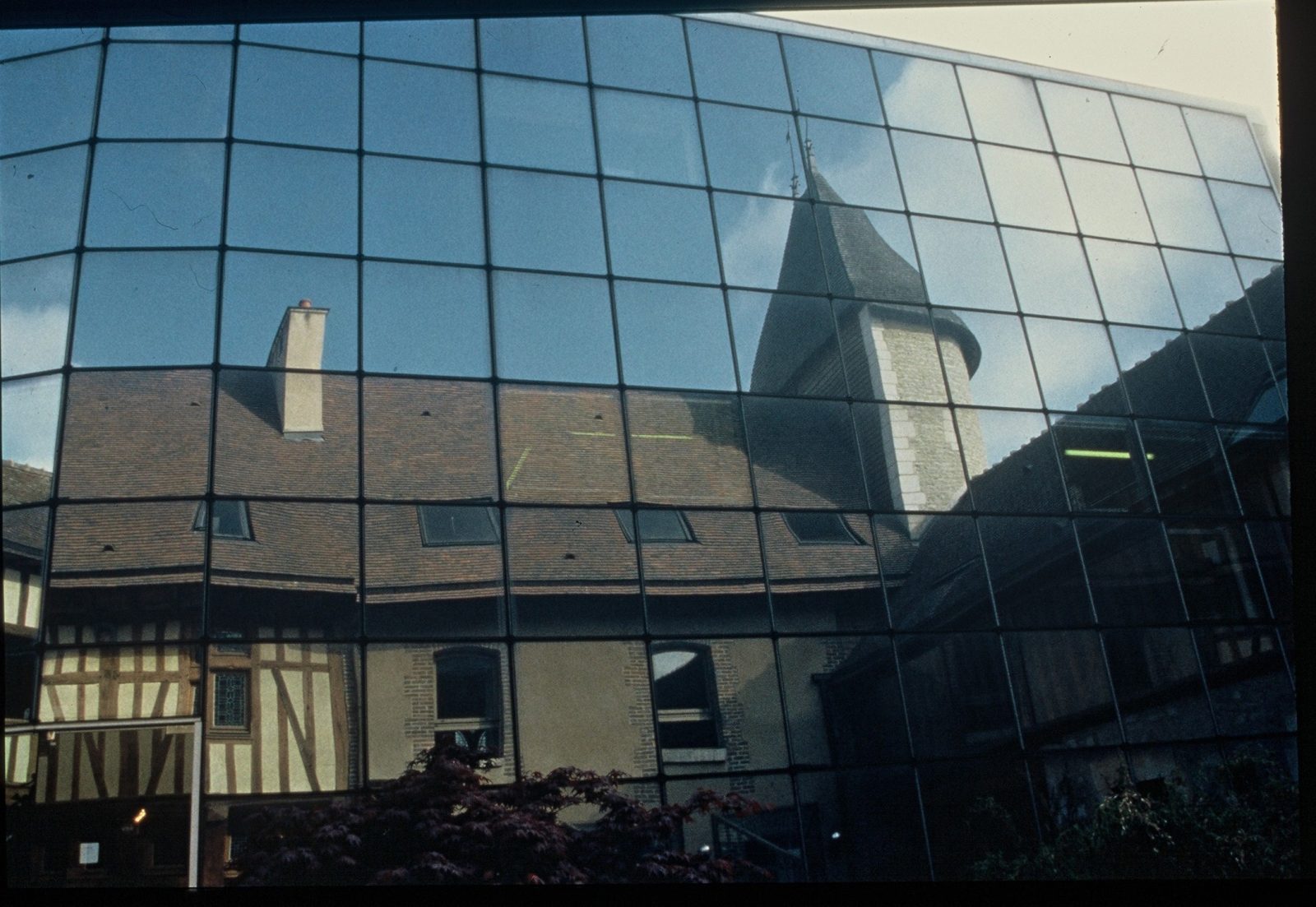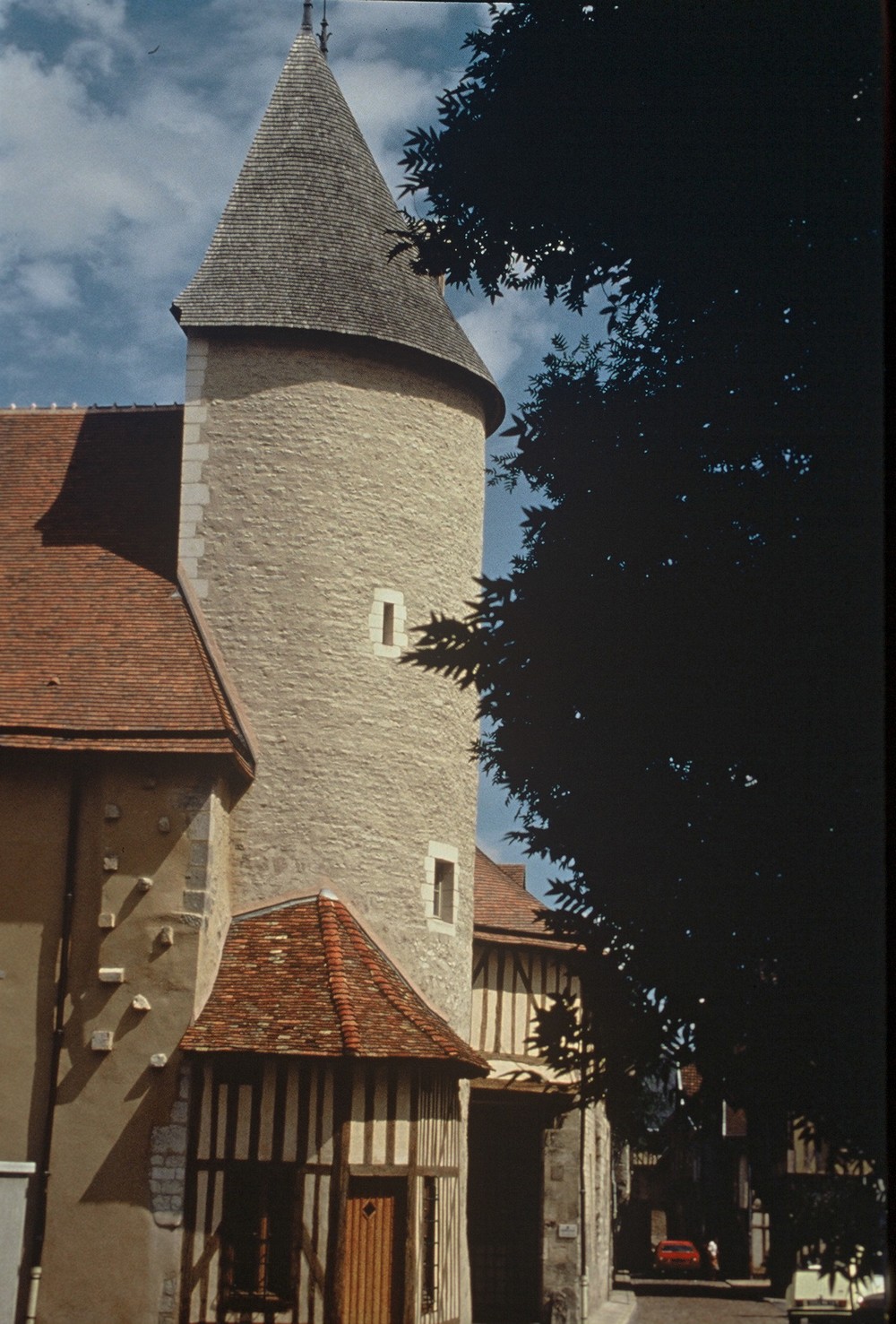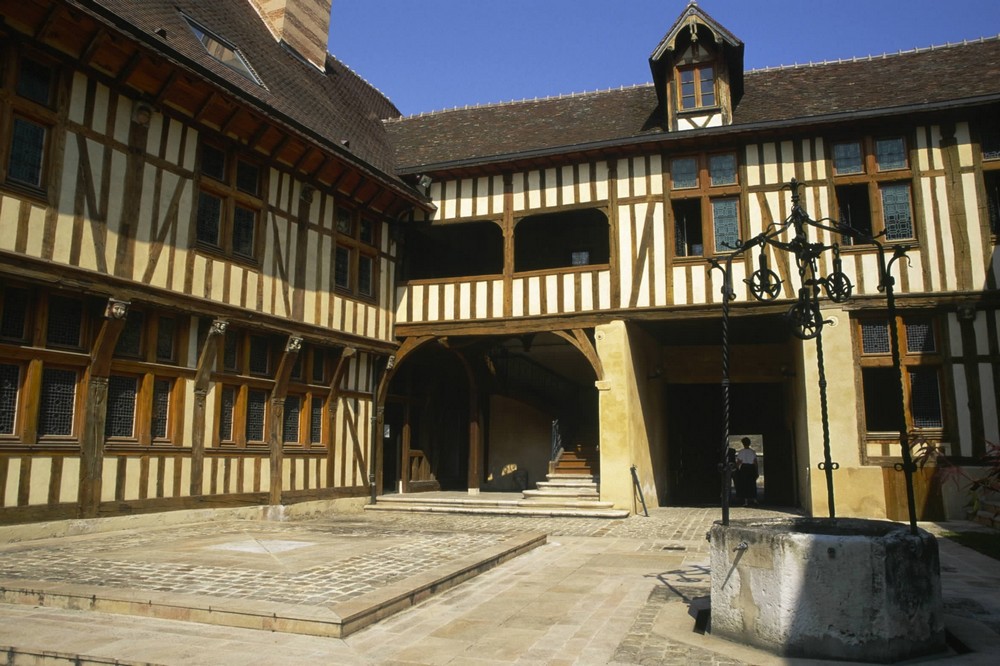About
Leaning against the first rampart of the ancient city, near the south gate, this former canons' house dates back to the 13th century.
It was then called Hôtel de la Montée, because the noble entrance was on Montée Saint-Pierre. The turret, rebuilt in 1989 when the building was refurbished, rests on the last remnants of Troyes' first rampart, which can be seen to the right.
At its foot, the little Trois-Pierres house, dating from 1753, was long used as a cobbler's shop. Another turret stood at the corner of Montée Saint-Pierre: its cobblestone floor plan has been traced on the street, and a third tower, known as the Chapitre, located at the corner of rue de l'Évêché, was demolished in the 19th century.
Today, the porte cochère opens onto a gate that replaces the old oak casements. In the inner courtyard on the left, the beautiful 16th-century half-timbered house retains its beams with end caps carved with figures and polychrome escutcheons. The house on the right is probably 18th-century.
In the center, the octagonal well, built on the basis of 16th c. plans It features a pulley system with wrought-iron uprights.
The Hôtel du Petit Louvre was home to many illustrious figures, including Joan of Arc in 1429. In the 16th c. it was the residence of Louis Budé, brother of the great humanist Guillaume Budé, and of Odard Hennequin, chaplain to King François I and Bishop of Troyes. In the 17th c. it was occupied by Marshal Charles de Choiseul-Praslin, Governor of Champagne.
In the 18th and 19th c. the Bourliet de la Prairie family set up a large coaching inn here: stagecoaches passing through the rue Linard-Gonthier gateway were able to reach Paris in a single, final stage, taking between twenty-four and thirty hours.
Rate
Services
Services
- Not open to the public


